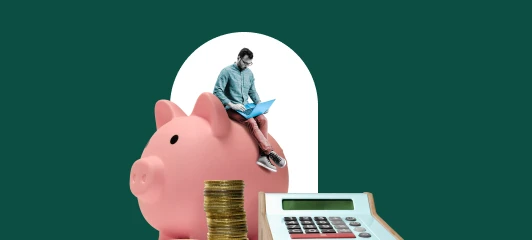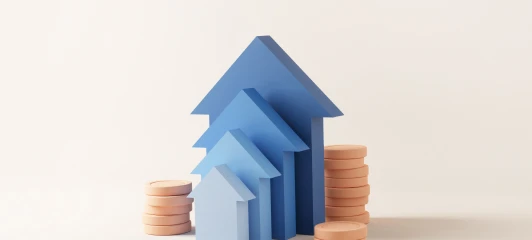Market confidence a world away from blind panic of 2008
Lehman's bankruptcy shocked the world because regulators led by the-then treasury secretary Henry Paulson allowed it to happen, and then fended off the systemic meltdown it threatened to induce with bailouts and liquidity injections that made their earlier attempts look like child's play.
Central banks including the US Federal Reserve and the European Central Bank injected $US2,500 billion into the system in the final three months of 2008 alone. Money centre banks and even General Motors in the US received emergency government debt and equity injections, and a crisis that had existed on trader's screens morphed into severe real-world slump in economic activity. The next phase of the crisis was primed, as governments that were too heavily geared going into the crisis began to struggle to finance their own rapidly expanding debt loads.
It takes an effort now to remember just how frightened the world was when Lehman went down.
One Wall Street banker who was directly involved in the struggle to save some of the finance world's greatest corporate names told me after the dust had settled that good global banks got within 24 hours of being swept away by the downdraft, and the bankers were not the only ones who were panicky.
A few months after Lehman's demise, as the sharemarket bottomed, Fox cable network talk show host Glenn Beck discussed a scenario where in 2014 "all the US banks have been nationalised [and] unemployment is at about 12 per cent. The Dow is trading at 2800 and the real estate market has collapsed." One of his guests, futurologist Gerard Celente, said major US cities would "look like Calcutta. There is going to be the homeless, panhandlers, hookers."
Satirist Stephen Colbert's take on that was "it's 2014. The Dow is under 250 points: koala pox has wiped out all the world's livestock, and instead of money, our currency is soybeans," and he was, of course, on the money. The time to buy is when everyone else agrees that it is the time to sell, and those who bought quality assets as governments shelled out cash to save the system have done well.
Financial market comparisons show just how extreme the period around the Lehman collapse was - and how much calmer investors are today.
The Chicago Board's VIX index measures the implied volatility of Wall Street's S&P 500 index. It has fallen by 82 per cent from its Lehman-era highs, and is now very close to pre-global crisis levels.
The spread between the London inter-bank lending rate and the over-the-counter three-month overnight index swap rate measures how desperate investors are to lock in short-term funding. It is normally a fraction of 1 per cent. In the lead up to Lehman's collapse, it rose above 2 per cent for US dollar funding, and a month after the collapse it hit 3.66 per cent. It is 0.16 per cent now.
Spain is the European economy that, in the past few years, has been most at risk of joining Greece, Portugal and Ireland as a sovereign debt casualty that requires a multilateral debt bailout. Its government was paying about 4 per cent for 10-year funding before Europe's sovereign debt crisis ramped up in 2010. It was paying 7.4 per cent in the third week of July last year. It is paying 4.46 per cent now.
As the yield on Spanish 10-year government bonds hit 7.4 per cent, the cost of credit default swap insurance against a Spanish government bond implosion also peaked, at 5.7 per cent. The same insurance costs 2.7 per cent now.
The language regulators are using has also changed. A year before the Lehman collapse, Australia's Reserve Bank said monetary policy was being tightened around the world to temper a boom, and that a consequent "modest" decline in the value of high risk financial assets was a "favourable development".
Just after Lehman's collapse, it said conditions were the worst for decades, confidence in the world's largest financial institutions had "fallen considerably", and that global financial system's problems were proving "to be much more pervasive and costly than was anticipated by many observers a year ago".
In its report for March this year, it said issues including the sovereign debt overhang made it hard to tell whether the world was in a temporary upswing or a sustained recovery but that global conditions had "improved significantly", giving stressed governments and financial institutions breathing space.
European Central Bank president Mario Draghi's declaration at the height of the Spanish bond market attack in July last year that he would do "whatever it takes" to defend Spain, Italy and the euro was a turning point that ranks with Lehman for importance.
The architecture of the support Draghi promised remains untested but the promise itself has scared bond market bears away, pulling European sovereign bond yields down, and giving the eurozone time to repair itself.
Europe is not out of the woods, and until it is, nor is the world. Investors are scaling a wall of worry, however, not staring into a precipice as they were five years ago.
mmaiden@fairfaxmedia.com.au
Frequently Asked Questions about this Article…
Lehman Brothers filed for bankruptcy on September 15, 2008, triggering a global scramble as regulators and central banks rushed to stop a systemic meltdown. The collapse revealed how excessive gearing in the financial system could cascade through markets, prompting unprecedented bailouts and liquidity injections that reshaped investor behaviour and policy responses.
Central banks including the US Federal Reserve and the European Central Bank injected massive liquidity — roughly US$2,500 billion in the final three months of 2008 — and supported distressed institutions (even automakers like General Motors). Those interventions calmed markets and helped stabilise the financial system, a key reason investor confidence today is much higher than during the Lehman era.
The VIX, which measures implied volatility of the S&P 500, fell about 82% from its Lehman-era highs and is now close to pre-crisis levels. For everyday investors, a much lower VIX generally signals calmer markets and less fear about large near-term swings compared with 2008–2009.
The spread between London interbank lending rates and three-month OIS (a measure of short-term funding stress) rose above 2% before Lehman and hit 3.66% a month after the collapse, showing extreme reluctance to lend. It’s around 0.16% now. Large spreads indicate funding stress and higher systemic risk; narrow spreads signal normalised market functioning.
Spain’s 10-year bond yield rose from about 4% before the euro-area crisis to 7.4% at the peak of last year’s attack, then fell back to about 4.46%. Credit default swap (CDS) costs for Spanish debt peaked at 5.7% and are now around 2.7%. These moves highlight how sovereign risk can spike quickly and materially affect bond and banking systems — a reminder that Europe’s issues still pose risks for global investors.
ECB president Mario Draghi’s promise to do ‘whatever it takes’ to defend the eurozone was a turning point that reduced bond-market pressure on countries like Spain and Italy. While the exact toolset remains untested, the pledge alone helped push sovereign yields down and bought time for eurozone repair, easing investor fears.
No — investors are generally calmer today. Key indicators (VIX, interbank spreads and sovereign yields) are much lower than their crisis peaks, reflecting improved liquidity and confidence. However, the article notes Europe is not fully out of the woods, so geopolitical or sovereign-debt shocks could still increase risk.
A clear takeaway is that panic can create buying opportunities: those who bought quality assets when governments and central banks were injecting cash and markets were distressed tended to do well. For everyday investors, that means maintaining a long-term plan and avoiding emotionally driven selling in extreme downturns.
















